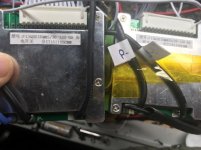Sunder
10 MW
Hi All,
I've been inspired to write this by the number of "My battery is only XXXkm/miles/days old, and I've lost range", type of threads. The answer given by experts is usually "Leave it on the charger overnight", which sometimes works, sometimes doesn't. Let me explain why:
Imagine you have a 14S pack. Most BMSes are designed to shunt excess charge at 4.20 +/- 0.05v, and cuts the charger at 4.25v =/- 0.05v. The problem arises if that +/- bit on those two measurements overlap. Let's say it starts shunting at 4.23v, but cuts charge at 4.22 - both within the tolerances specified.
What happens then is that when the first cell reaches 4.22v, the charger will stop charging the entire pack. In this scenario, you'll have 13 cells at 4.22v, leaving the last cell at 3.94v, or about 70% charged. This cell of course will trigger low voltage protection at the other end, meaning you've lost 30% of your range. In a worst case scenario (where it shunts at 4.25v, and cuts at 4.26 volts), you could potentially lose 90% of your range in a 14S pack. In larger packs, you could completely kill a cell.
The big problem arises because leaving it overnight will not really do anything in these cases - with such a low overcharge, the cells will not self-discharge, and the BMS is not shunting off current, which means the charger will never turn on again.
How do you get around this? There's a few ways:
1. Charge through the discharge port - this port usually is not protected. If you have an adjustable power supply, you might want set the voltage maybe 0.5v higher than the pack voltage, but limit the current to whatever the BMS can safely shunt. (Anywhere from 10ma to 1000ma, depending on quality)
2. Charge or discharge the cells directly, one at a time.
3. Some more advanced BMSes allow you to either change or bypass the cell voltage charge cut, without removing the pack voltage charge cut.
You probably need to be aware that in large capacities with really cheap BMSes, it can take weeks to rebalance - I needed 10 days on the charger 24 x 7 on my motorcycle to rebalance the pack (I used the slight overcharge through the charge port method). Unless you have a really dud pack, you should only need to do this from time to time as you notice your range reducing.
I hope this helps people in the future, if they're wondering why leaving their pack on charge overnight - or even longer, doesn't rebalance the pack.
I've been inspired to write this by the number of "My battery is only XXXkm/miles/days old, and I've lost range", type of threads. The answer given by experts is usually "Leave it on the charger overnight", which sometimes works, sometimes doesn't. Let me explain why:
Imagine you have a 14S pack. Most BMSes are designed to shunt excess charge at 4.20 +/- 0.05v, and cuts the charger at 4.25v =/- 0.05v. The problem arises if that +/- bit on those two measurements overlap. Let's say it starts shunting at 4.23v, but cuts charge at 4.22 - both within the tolerances specified.
What happens then is that when the first cell reaches 4.22v, the charger will stop charging the entire pack. In this scenario, you'll have 13 cells at 4.22v, leaving the last cell at 3.94v, or about 70% charged. This cell of course will trigger low voltage protection at the other end, meaning you've lost 30% of your range. In a worst case scenario (where it shunts at 4.25v, and cuts at 4.26 volts), you could potentially lose 90% of your range in a 14S pack. In larger packs, you could completely kill a cell.
The big problem arises because leaving it overnight will not really do anything in these cases - with such a low overcharge, the cells will not self-discharge, and the BMS is not shunting off current, which means the charger will never turn on again.
How do you get around this? There's a few ways:
1. Charge through the discharge port - this port usually is not protected. If you have an adjustable power supply, you might want set the voltage maybe 0.5v higher than the pack voltage, but limit the current to whatever the BMS can safely shunt. (Anywhere from 10ma to 1000ma, depending on quality)
2. Charge or discharge the cells directly, one at a time.
3. Some more advanced BMSes allow you to either change or bypass the cell voltage charge cut, without removing the pack voltage charge cut.
You probably need to be aware that in large capacities with really cheap BMSes, it can take weeks to rebalance - I needed 10 days on the charger 24 x 7 on my motorcycle to rebalance the pack (I used the slight overcharge through the charge port method). Unless you have a really dud pack, you should only need to do this from time to time as you notice your range reducing.
I hope this helps people in the future, if they're wondering why leaving their pack on charge overnight - or even longer, doesn't rebalance the pack.


